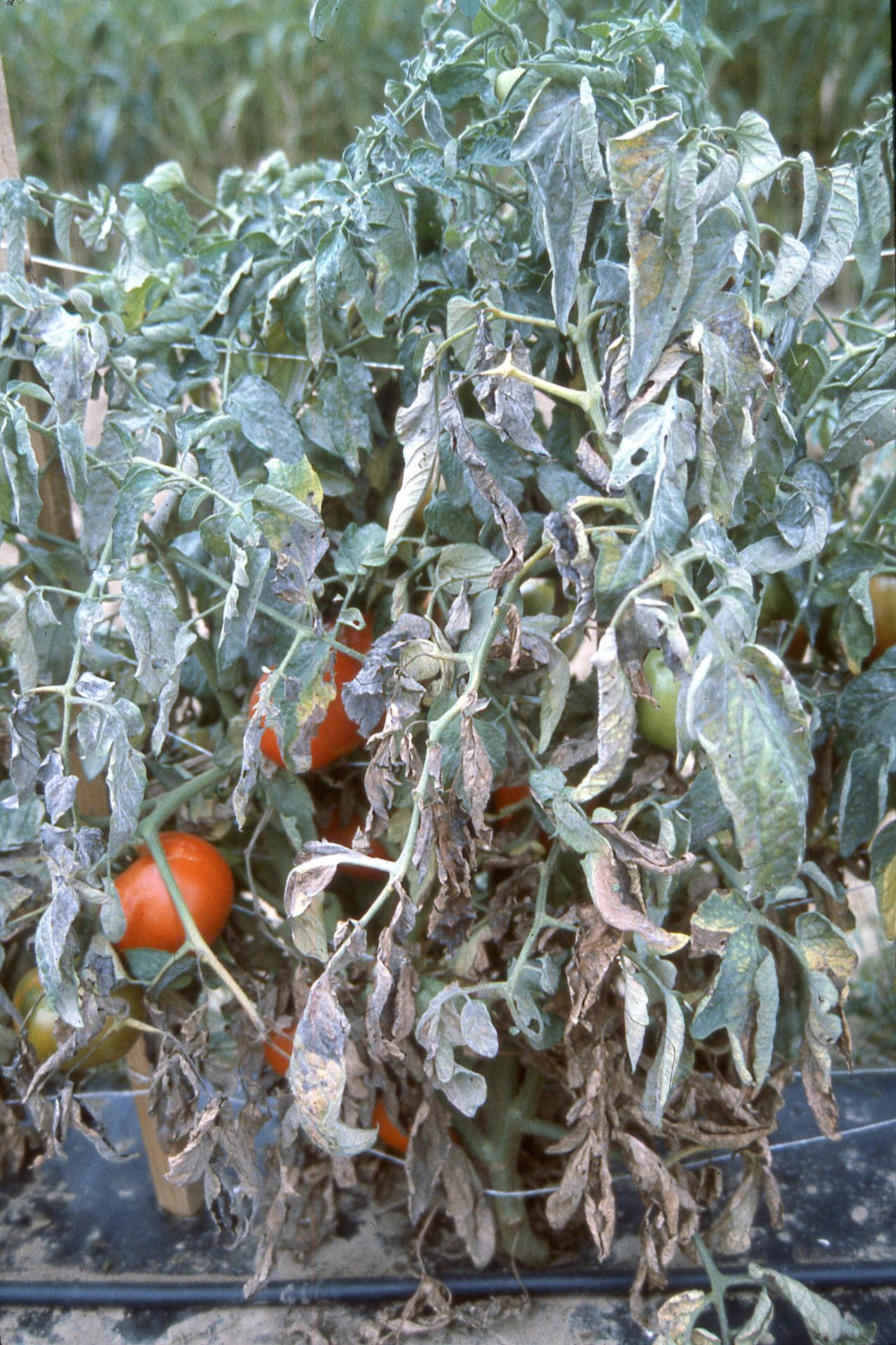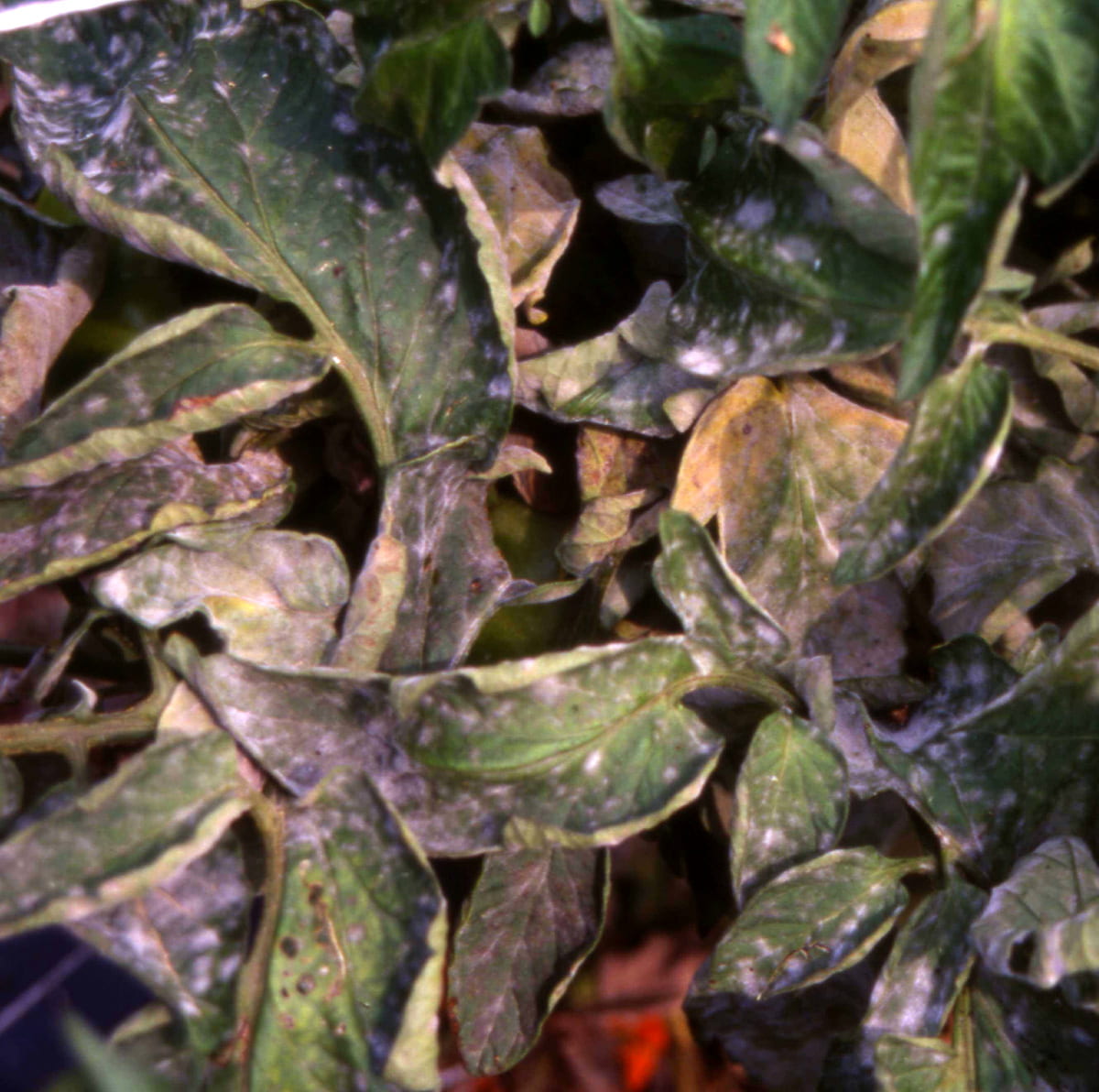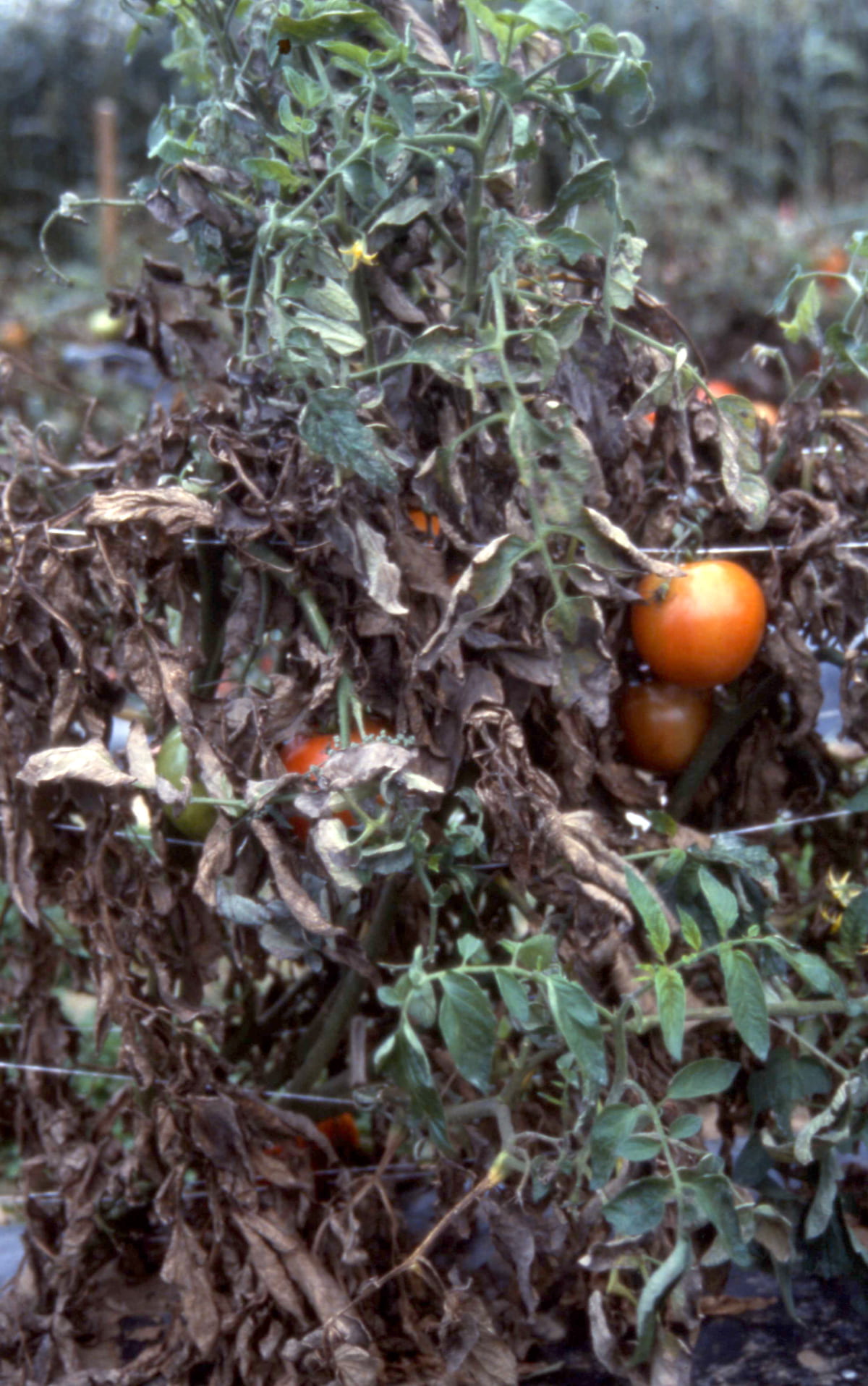Powdery mildew is a disease of leaf tissue that occurs sporadically on Long Island, and elsewhere in the USA. Outdoors it tends to be more common in gardens than commercial crops, perhaps reflecting different environmental conditions and crop management practices. It also develops on tomatoes grown in greenhouses and high tunnels where it can be a very important disease.
Yield and fruit quality can be reduced by powdery mildew because the disease can develop quickly, and severely affected leaves are killed. This results in less fruit being produced, especially with cherry, Heirloom, and other indeterminant tomato plant types. Fruit that forms typically does not taste as good as fruit produced on a plant with a full canopy of photosynthetically-active leaves, and it is more likely to develop sunscald damage with less protective leaf cover.
Pathogens causing powdery mildew typically have narrow host ranges. Thus the powdery mildew occurring on tomato is caused by a different pathogen than the one occurring on squash, or on peas, or on roses. Sometimes weeds are also hosts and thus can function as a potential source of a powdery mildew pathogen.
The pathogen causing powdery mildew on Long Island and throughout the eastern U.S. is Oidium neolycopersici. A different fungus, Leveillula taurica, occurs in other areas, including California. Both pathogens produce characteristic white, powdery growth. Leveillula taurica only produces this on the underside of leaves. Leveillula taurica has been observed twice on Long Island and only in pepper.
Like other powdery mildews, the white, powdery growth is mostly the asexually-produced spores (conidia) of the pathogen plus the structures the spores form on. The spores are easily dispersed by wind. A spore landing on a tomato leaf can infect and in about one week develop a new disease spot with an abundance of spores ready to be dispersed. Powdery mildew fungi do not require leaf wetness or high humidity to infect leaves, as do other fungi causing foliar diseases. Their ability to develop under a range of conditions combined with their ability to quickly produce a lot of spores, means powdery mildew diseases can develop rapidly. While moisture is not required, tomato powdery mildew develops best when the air is somewhat humid, but not above 95% RH.
Main management practices for powdery mildews are selecting resistant or less susceptible varieties and applying fungicides.
Resistance to powdery mildew caused by Leveillula taurica has been bred into a few varieties (see Tomato Resistant Variety Table) that are adapted for being grown under greenhouse conditions because this disease has been more problematic under those conditions than outdoors for growers. Grace is a greenhouse variety that grew well and demonstrated good suppression of Oidium neolycopersici under field conditions in an experiment conducted in CT (see Powdery Mildew on Tomato at UConn website). Noticeable differences in susceptibility to powdery mildew caused by this fungushave been observed among other varieties growing outdoors.
Powdery mildews are relatively easy to control with fungicides. There are several conventional and biological products that have proven effective in efficacy experiments with this and other powdery mildews. Plants cannot be cured of a disease with a medicine as can animals, thus successful control of any disease in a plant necessitates starting treatment with fungicides at the very first symptom or beforehand. Many foliar diseases, including powdery mildew, begin when plants are stressed including by fruit production, thus this is often a good time to start treatment. Conventional fungicides include those containing sulfur, copper, chlorothalonil or mineral oil as the active ingredient. Botanical oil (including sesame, rosemary, and thyme), plant extracts (giant knotweed), biocontrol microorganisms (including species of Bacillus and Streptomyces), and potassium bicarbonate are some of the active ingredients in biological fungicides, most of which are approved for organic production. Typically fungicides need to be applied weekly to maintain control.
Removing affected leaves is not considered a viable approach to managing any powdery mildew disease because once spots are seen spore dispersal has likely already occurred from the spots, spores will likely be disrupted in the process of removing leaves, and there likely will continue to be sources of spores from other plants in the area.
Rotating where tomatoes are grown is not a viable practice because these are obligate pathogens, thus they need living host plant tissue to survive (they cannot live in diseased crop debris over winter). Some other powdery mildew pathogens are able to produce a special structure (cleistothecium, chasmothecium, ascocarp) that can survive in a dormant state like a seed over winter. Ascospores form within it. Production of this structure and spores typically occurs when powdery mildew pathogens reproduce sexually, which requires interaction among two pathogen strains of opposite mating type (fungal equivalent of gender).
Please Note: Fungicides mentioned are for use in commercial production, not gardens. The specific directions on pesticide labels must be adhered to — they supersede these recommendations if there is a conflict. Any reference to commercial products, trade or brand names, is for information only; no endorsement is intended. For up-to-date information on labeled conventional fungicides see Cornell Integrated Crop and Pest Management Guidelines for Commercial Vegetable Production and biopesticides see the Biopesticides website.
Leaves below from a high tunnel have the characteristic fungal growth of the powdery mildew pathogen on the leaf surface but lack the typical fuzzy appearance as there are no spores due to a high infestation of mites which eat spores.









